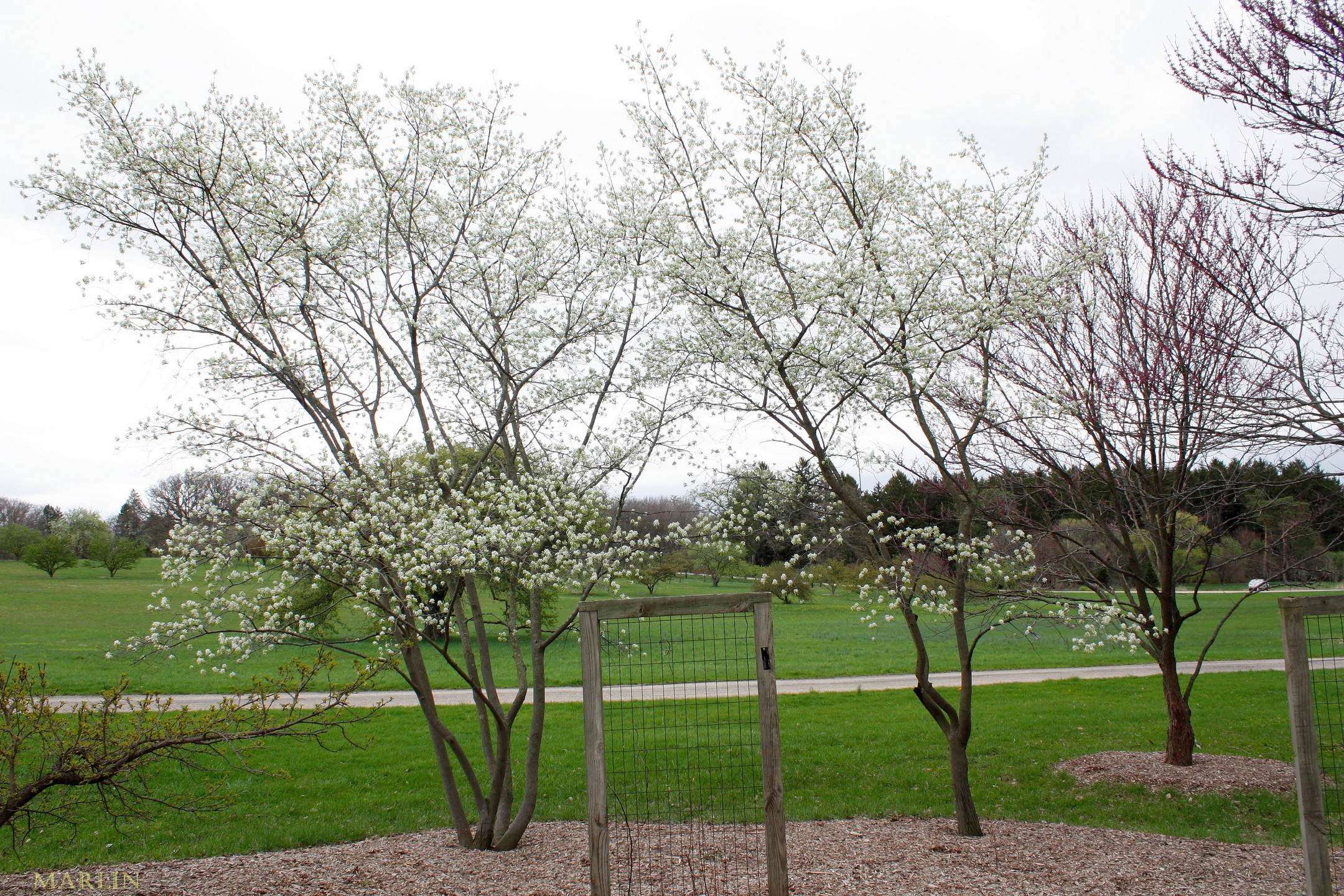Allegheny Shadblow or Serviceberry
Amelanchier laevis 29 years old at this photo [1]
Allegheny serviceberry is found growing in thickets, open woods and wood margins and glades throughout eastern Noth America [2]. A deciduous understory shrub, it grows to 25 feet but usually less. Fragrant, 5-petaled flowers appear in drooping clusters in early spring. Small berries resembling blueberries ripen to deep purple in June (hence another common name, Juneberry). Supremely edible and tasty, they are used in jam, jelly and pies, and eaten by birds and other wildlife.
Serviceberry is known by a whole host of common names, including shadbush, chuckley pear, or juneberry. Serviceberry is widespread across vast swath of Alaska, Canada, and temperate North America. Several cultivars are very popular ornamental shrubs, grown for their flowers, bark, and fall color. George Washington planted specimens of Amelanchier on the grounds of his estate, Mount Vernon, in Virginia.
There are about 20 species of deciduous-leaved shrubs and small trees in the genus Amelanchier that are commonly called shadbush, shadwood or shadblow, serviceberry, wild pear, juneberry, saskatoon, sugarplum or wild-plum. Native to temperate regions of the Northern Hemisphere, these mid- to understory plants grow primarily in early successional habitats. At least one species is native to every U.S. state and to every Canadian province and territory. Two species grow in Asia, one in Europe [3].
The various species of Amelanchier grow to 20 m tall; some are small trees, some are multi-stemmed, clump-forming shrubs, and yet others form extensive low shrubby patches (clones). [3].
References
- Allegheny Serviceberry, Morton Arboretum 533-80-7 & 8 photos © Bruce Marlin
- Wikipedia, Amelanchier alnifolia
- Wikipedia, Amelanchier
Family Rosaceae – Rose Family; Fruit Trees
Containing hawthorn, apple, pear, cherry, plum, peach, almond, mountain-ash and whitebeam. Many of these plants are of vital economic importance, the fruit of which contain vitamins, acids, and sugars and can be used both raw and for making preserves, jam, jelly, candy, wine, brandy, cider and other beverages.


